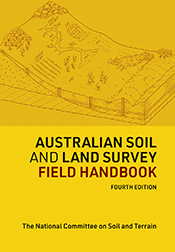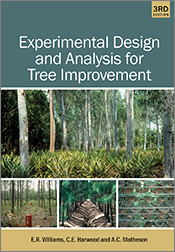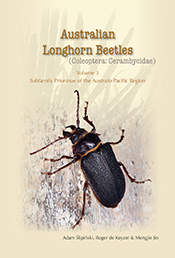New Forests
Wood Production and Environmental Services
By: Sadanandan S Nambiar, Ian I FergusonCreating new forests for commercial wood production and environmental benefits.
There is no question that the timber industry needs to adopt sustainable practices that ensure a future for the industry. This book goes well beyond simply growing commercial tree plantations for wood production. It explores new forests that can supply environmental services such as salinity mitigation and carbon sequestration together with commercial wood production in an environment beyond the boundaries of traditional forestry. + Full description
New Forests targets agricultural landscapes affected by salinity and which generally have rainfall less than 650 mm per year. The book addresses vital issues such as where tree planting might best be pursued, what species and technologies should be used for establishment and later management, how productivity can be improved, what mix of environmental services and commercial goods is optimum, and whether the likely net benefits justify the change in land use and requisite investment.
While the book is focussed on the low-rainfall, agricultural, inland zone of the Murray-Darling Basin wherever possible the scope of most chapters has been expanded to synthesise generic information applicable to other regions in Australia and elsewhere.
The authors provide a comprehensive account of all the issues relevant to the development of these new forests, covering soils, the bio-physical environment, water use and irrigation strategies - including the use of wastewater, silviculture, pests and diseases, wood quality and products, and economics and policy implications.
- Short descriptionNews
No longer available in a print edition.
Reviews
"New Forests is a unique powerhouse of scientific knowledge, written by experts. It brings together a wide range of plantation science in a form that any tertiary trained person can understand. . .I would recommend this book to all persons involved in policy, planning, management and research of new-forests and or traditional plantation forestry on farmland."
Arthur Lyons (Australian Forest Grower, Summer 2005)
Details
ePDF | November 2005ISBN: 9780643093089
Publisher: CSIRO Publishing
Available from eRetailers
Features
- Considers environmental benefits together with commercial wood production
- Provides a comprehensive analysis of the potential for converting a new wood resource into wood products.
- Discusses the economics and policy implications of a significant new forestry program
- Liberally illustrated with graphs, photographs and maps
- Based on 15 years of trials in the Murray-Darling Basin
Contents
Acknowledgements1 Introduction
Sadanandan Nambiar, Ensis, CSIRO and Ian Ferguson, University of Melbourne
2 Environment, species selection and productivity prediction
Trevor Booth, Ensis, CSIRO
3 Genetic variation and tree improvement
Roger Arnold, Ensis, CSIRO, David Bush, Ensis, CSIRO and Desmond Stackpole, Department of Sustainability and Environment
4 Plantation productivity in saline landscapes
Nico Marcar, Ensis, CSIRO and Jim Morris, Department of Sustainability and Environment
5 Plantation water use
Jim Morris, Department of Sustainability and Environment and Richard Benyon, Ensis, CSIRO
6 Growth and silvicultural management of irrigated plantations
Thomas Baker, Department of Sustainability and Environment, Michael Duncan, Department of Sustainability and Environment and Desmond Stackpole, Department of Sustainability and Environment
7 Water management and groundwater uptake in plantations
Swaminathan Theiveyanathan, Ensis, CSIRO and Phil Polglase, Ensis, CSIRO
8 Diseases and insect pests
Frederick G Neumann, Consultant, Ian W Smith, Department of Sustainability and Environment and Nicholas G Collett, Department of Sustainability and Environment
9 Integration of sawn timber and pulpwood production
Russell Washusen, Ensis, CSIRO and Noel Clark, Ensis, CSIRO
10 Economic and policy implications
Ian Ferguson, University of Melbourne
11 Synthesis: new forests for new landscapes
Sadanandan Nambiar, Ensis, CSIRO and Ian Ferguson, University of Melbourne
Index








